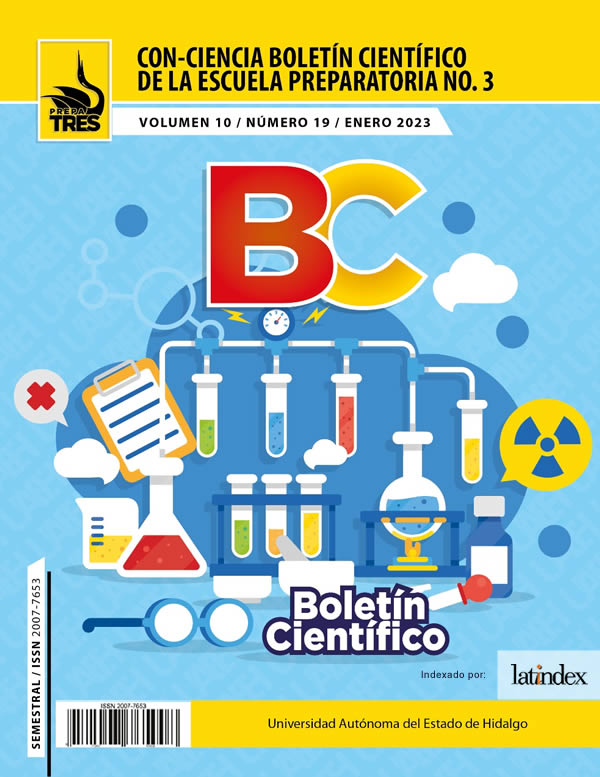¿Sabías que el color de muchas especies vegetales se debe a las antocianinas y sus interacciones?
Palabras clave:
Antocianinas, estabilidad, interaccionesResumen
Las antocianinas son pigmentos naturales que confieren colores que van del rojo al azul pasando por naranja y violeta de muchas especies vegetales, adicionalmente, presentan propiedades bioactivas entre ellas actividad antioxidante, de modo que han captado la atención de la comunidad científica por su amplia gama de posibles aplicaciones. En la naturaleza las antocianinas se encuentran interactuando con otros compuestos lo que les confiere estabilidad, sin embargo, una vez aisladas, son inestables y se ven afectadas por diversos factores que pueden modificar el color, siendo necesario profundizar en la investigación de sus interacciones para propiciar su estabilidad. Por lo que en el presente trabajo se darán a conocer brevemente las interacciones de las antocianinas con otros compuestos y cómo ocasionan variaciones en la presentación del color.
Información de Publicación
Perfiles de revisores N/D
Declaraciones del autor
Indexado en
- Sociedad académica
- N/D
Citas
Nguyen, T. T., Phan-Thi, H., Pham-Hoang, B. N., Ho, P. T., Tran, T. T. T., & Waché, Y. Encapsulation of Hibiscus sabdariffa L. anthocyanins as natural colours in yeast. Food Research International; 2018; 107, 275–280.
Castañeda-Ovando, A., Sedo, O., Havel, J., Pacheco, L., Galán-Vidal, C. A., & Contreras López, E. Identification of anthocyanins in red grape, plum and capulin by MALDI-ToF MS. Journal of the Mexican Chemical Society; 2012; 56(4), 378-383.
Enaru, Bianca, et al. Anthocyanins: Factors affecting their stability and degradation. Antioxidants, 2021;10 (12): 1967.
Estévez, L., & Mosquera, R. A. Conformational and Substitution Effects on the Electron Distribution in a Series of. The Journal of Physical Chemistry A; 2009; 113, 9908–9919.
Albuquerque, B. R., Oliveira, M. B. P., Barros, L., & Ferreira, I. C. Could fruits be a reliable source of food colorants? Pros and cons of these natural additives. Critical Reviews in Food Science and Nutrition; 2021; 61(5), 805-835.
Zhao, X., & Yuan, Z. Anthocyanins from pomegranate (Punica granatum l.) and their role in antioxidant capacities in vitro. Chemistry & Biodiversity; 202; 18(10), e2100399.
Liu, J., Zhou, H., Song, L., Yang, Z., Qiu, M., Wang, J., & Shi, S. Anthocyanins: Promising natural products with diverse pharmacological activities. Molecules; 2021; 26(13), 3807.
Alappat, B., & Alappat, J. Anthocyanin pigments: Beyond aesthetics. Molecules; 2020; 25(23), 5500
Fang, J. Bioavailability of anthocyanins. Drug Metabolism Reviews; 2014; 46(4), 508–520.
Yari, A., & Rashnoo, S. Optimization of a new method for extraction of cyanidin chloride and pelargonidin chloride anthocyanins with magnetic solid phase extraction and determination in fruit samples by HPLC with central composite design. Journal of Chromatography B; 2017; 1067, 38-44.
Cortez, R., Luna-Vital, D. A., Margulis, D., & Gonzalez de Mejia, E. Natural Pigments: Stabilization Methods of Anthocyanins for Food Applications. Comprehensive Reviews in Food Science and Food Safety; 2017; 16(1), 180–198.
Castañeda-Ovando, A., Pacheco-Hernández, M. de L., Páez-Hernández, M. E., Rodríguez, J. A., & Galán - Vidal, C. A. Chemical studies of anthocyanins: A review. Food Chemistry; 2009; 113(4), 859–871.
He, S., Lou, Q., Shi, J., Sun, H., Zhang, M., & Qian, L. Water Extraction of Anthocyanins from Black Rice and Purification Using Membrane Separation and Resin Adsorption. Journal of Food Processing and Preservation; 2016; 41(4), 1–8.
Chung, C., Rojanasasithara, T., Mutilangi, W., & McClements, D. J. Enhancement of colour stability of anthocyanins in model beverages by gum arabic addition. Food Chemistry; 2016; 201, 14–22.
Oliveira, J., Azevedo, J., Seco, A., Mendoza, J., Basílio, N., de Freitas, V., & Pina, F. Copigmentation of anthocyanins with copigments possessing an acid-base equilibrium in moderately acidic solutions. Dyes and Pigments; 2021; 193, 109438.
Fan, L., Wang, Y., Xie, P., Zhang, L., Li, Y., & Zhou, J. Copigmentation effects of phenolics on color enhancement and stability of blackberry wine residue anthocyanins: Chromaticity, kinetics and structural simulation. Food chemistry; 2019; 275, 299-308.
Li, J., Wang, B., He, Y., Wen, L., Nan, H., Zheng, F., ... & Zhang, H. A review of the interaction between anthocyanins and proteins. Food Science and Technology International; 2021; 27(5), 470-482.
Olaya, C., Castaño, M., & Garzón, G. Stability of anthocyanins from Rubus glaucus and Solanum betaceum cav.dark-red strain as affected by temperature, storage and water activity. Acta Biológica Colombiana; 2009; 14(3), 143–158.
Fernandes, A., Brandão, E., Raposo, F., Maricato, É., Oliveira, J., Mateus, N., Coimbra, M. A., & de Freitas, V. Impact of grape pectic polysaccharides on anthocyanins thermostability. Carbohydrate Polymers; 2020; 116240.
Shah, A., Masoodi, F. A., Gani, A., Gani, A., Noor, N., & Fazli, A. Arabinoxylans. En, Food biopolymers: Structural, functional and nutraceutical properties. Springer, Cham; 2021; pp. 173-186












